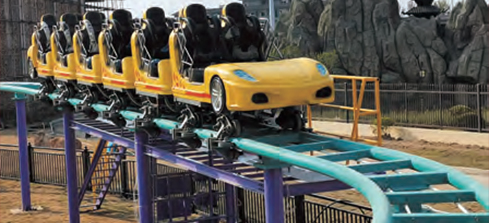- Albanian
- Arabic
- Belarusian
- Bengali
- Czech
- English
- French
- German
- Hebrew
- Hungarian
- Indonesian
- irish
- Italian
- Japanese
- kazakh
- Persian
- Russian
- Thai
- Uzbek
- Vietnamese
Creating Engaging Content for Your First Carousel
The First Carousel A Journey Through Time
The first carousel, a delightful creation that has captured the hearts of both young and old, can be traced back to the Middle Ages
. This enchanting amusement ride, characterized by its revolving platform adorned with beautifully crafted horses and other creatures, has a rich history that reflects the evolution of entertainment throughout the centuries.Originally, carousels were not the joyous rides we know today, but rather a training device for knights. In the 12th century, they were used to teach horse riding skills and combat training. Young knights would practice their skills by tossing balls at one another while riding in circles on their steeds. This festival-like event featured various competitive activities, embodying a spirit of camaraderie and chivalry. The term carousel itself is derived from the Italian word carosello, which means little war.
As time progressed, this training method transitioned into a form of entertainment during the Renaissance. Nobility and royal courts would often host elaborate festivities that included spinning wooden platforms. These platforms, adorned with animals and decorations, marked the earliest iterations of the carousel as we know it today. Riders, both young and old, found joy in these whimsical machines, which combined artistry, craftsmanship, and the thrill of motion.
The 18th century saw the first carousels equipped with a rotating platform that was powered by horses or other animals. These early versions spread throughout Europe, leading to the first carousel being built in Paris in 1805. The enchanting nature of these rides quickly gained popularity, and they became a staple in fairs and amusement parks across the continent. Elaborate designs featuring intricate wood carvings, mirrors, and painted scenes transformed them into breathtaking attractions.
By the 19th century, carousels had made their way to the United States, where they underwent further transformation. American carousel builders innovated by creating the “penny arcade style of carousel, which appealed to the burgeoning middle class seeking recreational activities. These carousels were often mechanized, allowing them to operate continuously without the need for animal power. With the introduction of steam engines, the ride became even more efficient and could accommodate larger numbers of riders.
first carousel

The artistry involved in constructing carousels reached new heights during this period. Artists and craftsmen dedicated themselves to creating magnificent wooden horses, each with its unique characteristics and vibrant colors. This was a time when carousels became a true art form, showcasing exceptional talent and detail. Scenes depicting mythology, nature, or historical events adorned the ride, offering children and adults a glimpse into a fantastical world.
In the 20th century, the golden age of carousels unfolded in American amusement parks. Iconic carousels, such as those found at Coney Island and Disneyland, became symbols of nostalgia and joy. Families flocked to these vibrant attractions, creating memories that would last a lifetime. The carousel served as a backdrop for countless photographs, celebrations, and stories shared amongst loved ones.
Today, the appeal of the carousel endures, transcending generations. While modern technology has introduced a myriad of entertainment options, many still find solace and joy in the gentle swaying motion of a carousel ride. Many carousels are meticulously restored and preserved, highlighting their historical and cultural significance. They stand as a reminder of simpler times, where laughter and enchantment filled the air.
Moreover, carousels have evolved beyond mere amusement park attractions. They are often featured in public spaces, community parks, and libraries, symbolizing a sense of unity and joy. Carousel-themed art installations and festivals celebrate this whimsical ride's enduring legacy, fostering a shared experience among community members.
In conclusion, the first carousel has undergone a remarkable transformation from its medieval origins to a beloved fixture of modern entertainment. It serves as a testament to humanity's enduring desire for joy, connection, and creativity. The carousel remains a timeless symbol of nostalgia—a spinning vessel of memories that continues to bring smiles to faces young and old. As we ride through life, may we always find time to enjoy the simple pleasures that connect us to our past.
-
Flume Ride-Hebei Zhipao Amusement Equipment Manufacturing Co., Ltd.|Thrilling Water Attraction&Customizable DesignJul.30,2025
-
Flume Ride - Hebei Zhipao Amusement Equipment | Water Coaster, Thrilling DescentJul.30,2025
-
Flume Ride - Hebei Zhipao | Thrilling Water AttractionJul.30,2025
-
Flume Ride: Thrilling Water Attraction by Hebei Zhipao|Log Flume Manufacturers&Flume Ride DesignJul.30,2025
-
Flume Ride-Hebei Zhipao Amusement Equipment Manufacturing Co., Ltd.|Thrilling Water Coaster, Safe DesignJul.30,2025
-
Flume Ride-Hebei Zhipao Amusement Equipment Manufacturing Co., Ltd.|Thrilling Water Attraction, Safe DesignJul.30,2025
